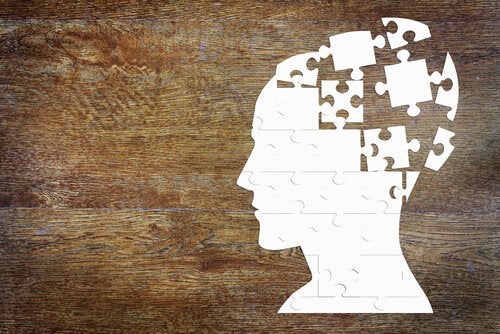In 1955, George Kelly presented the theory of personal construction as an alternative to the two main approaches put in place to understand human understanding: behaviorism and psychodynamic theories (psychoanalysis), a current one that questioned the psychological thinking that existed at the time.
Traditionally, psychological research considers all people who study as objects of study; therefore, they differentiate them from someone who, like them, tries to make sense of events. In this sense, Kelly suggested that we should change the way we think about science if it applies to humans.
- The premise of George Kelly’s personal construction theory was simple but radical.
- He said that people never know the world directly.
- But only through the images he creates.
- In this way he sees the human being as a scientist who builds and alters his knowledge.
- And hypotheses according to his experience.
Therefore, constructions are the mental maps that we have of reality, in addition to their opponents, so to define what is something it is necessary to discover what is not, according to Kelly’s theory, for example, to be happy for me may be different. to be happy for others, depending on how we interpret what it means to be emotionally ill.
George Kelly’s theory of personal construction invites us to understand how each of us sees the world. Instead of using complex concepts in psychology to understand people, this stream of thought tries to understand people on their own terms.
Kelly’s theory of personal construction suggests that people develop their personal constructions according to their understanding of how the world works, that is, through constructions, they make sense of what they observe and experience.
During the 1950s, behavioral and psychoanalytic perspectives were still widespread in psychology, and Kelly, for her part, saw people as active creators of their reality, as opposed to the ideas of these two currents, in which the subject could do little to change his worldview.
Kelly argued that since our birth, we have been developing a set of personal constructs, which are essentially mental representations we use to interpret events and make sense of what is happening, based on our experiences and observations.
Instead of seeing humans as taxable subjects at the mercy of associations, reinforcements and punishments they encounter in their environment (conductism), or their unconscious desires and childhood experiences (psychoanalysis), Kelly felt that the way they collect and interpret knowledge.
Throughout our lives, we conduct experiments that test our beliefs, perceptions, and interpretations; if these experiences work, they reinforce our current beliefs; when that doesn’t happen, we can change our opinions. For Kelly’s theory of personal construction, this is essential.
Because of this process, we experience the world through the “lens” of our beliefs. They are used to predict and anticipate events, which in turn determine our behaviors, feelings and thoughts.
Kelly also argued that all the events that occur are open to multiple interpretations and in his work calls them constructive alternatives. When we try to understand an event or situation, we can also choose the construction we want to use to explain it.
Kelly argued that the process of using mental constructs works in the same way a scientist uses a theory. First, we start with a hypothesis as to why a situation occurs, then test it by applying construction and predicting the result we believe. If we succeed, we will understand that mental building is useful in this situation and retain it for future use.
However, when our predictions are not met, we can follow three paths
On the other hand, the recurrence of a situation plays an important role in the theory of personal constructions. Constructions happen because they reflect things that are often repeated in our experience.
Besides, Kelly believed that our ways of seeing the world tend to be organized hierarchically. Therefore, we can find more basic constructions at the bottom of the hierarchy; more complex and abstract constructions would be placed at higher levels.
According to Kelly, the buildings are bipolar. In other words, each construct consists of a couple of opposite faces, the side that a person applies to an event is known as a pop-up pole, what does not apply is the implicit pole.
Finally, it is essential to remember the emphasis placed on individuality in the theory of personal constructions. Constructions are inherently personal because they are based on individual life experiences. Each person’s belief system is unique and it is the individual nature of these experiences that forms the differences between people.
George Kelly argued that the validity of any theory lies in its usefulness; in the case of his theory, his usefulness has been proven in many different fields: linguistics, history, psychotherapy, administration, organizational development, market research, sociology, psychiatry, psychology and many others.
Today, the theory of personal construction remains alive and active, with organizations studying it in the United States, Europe and Australia.

